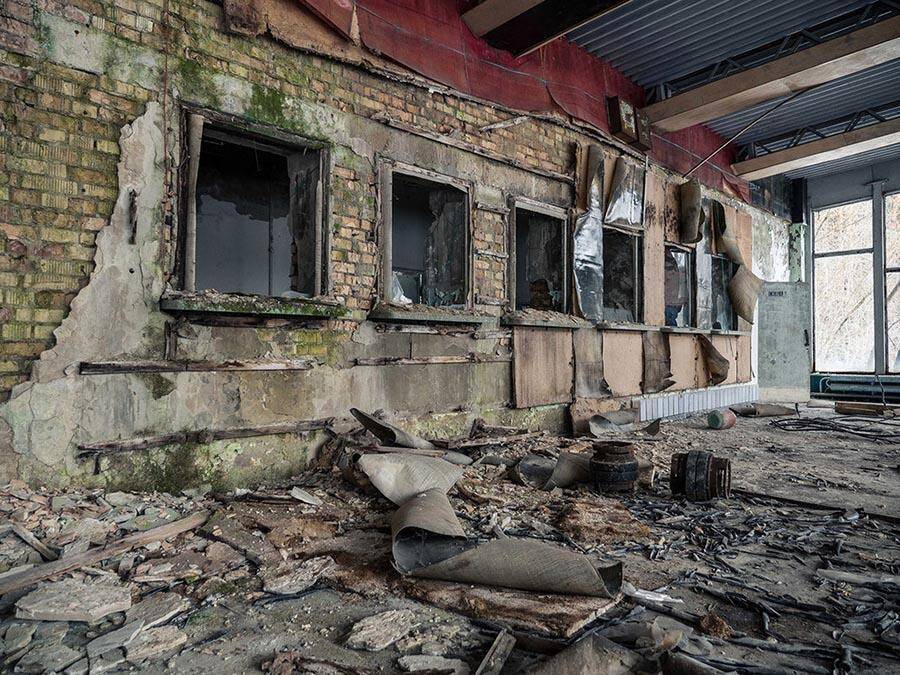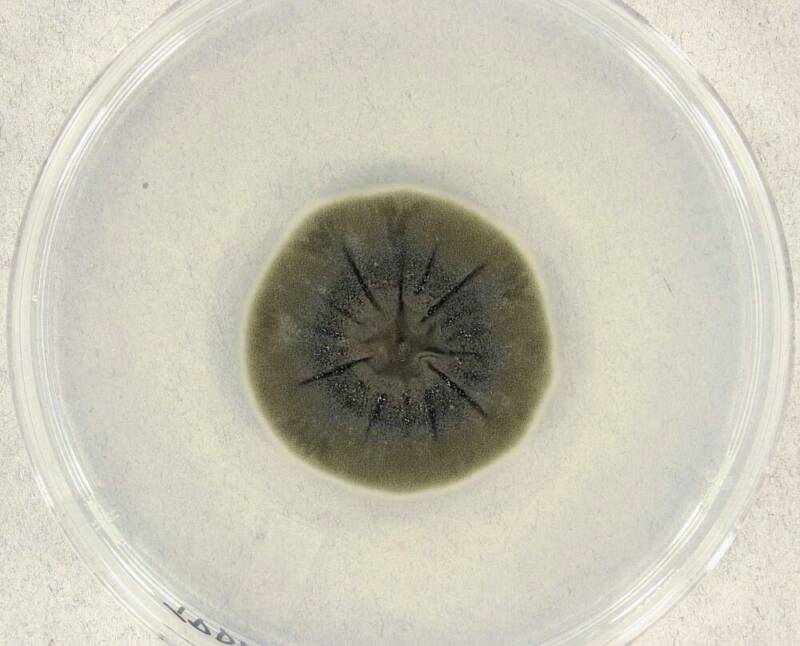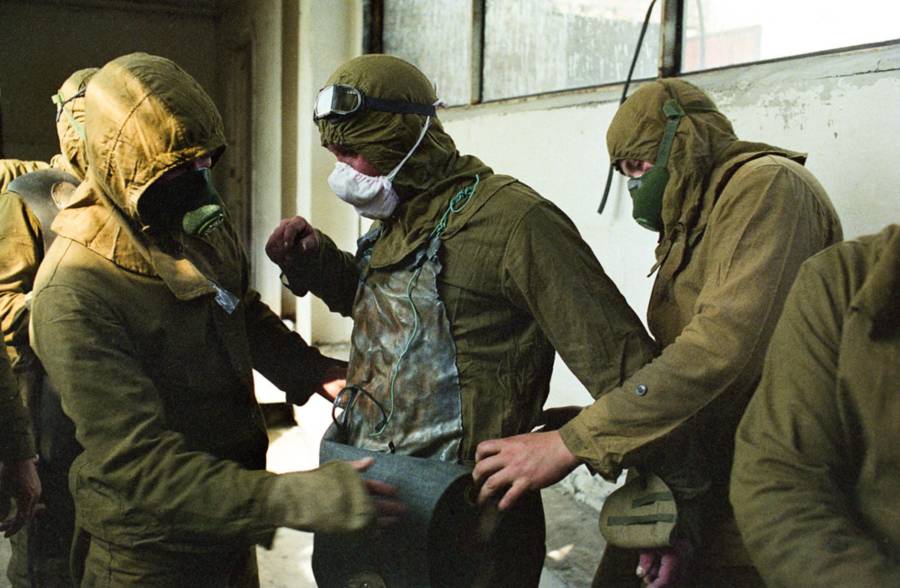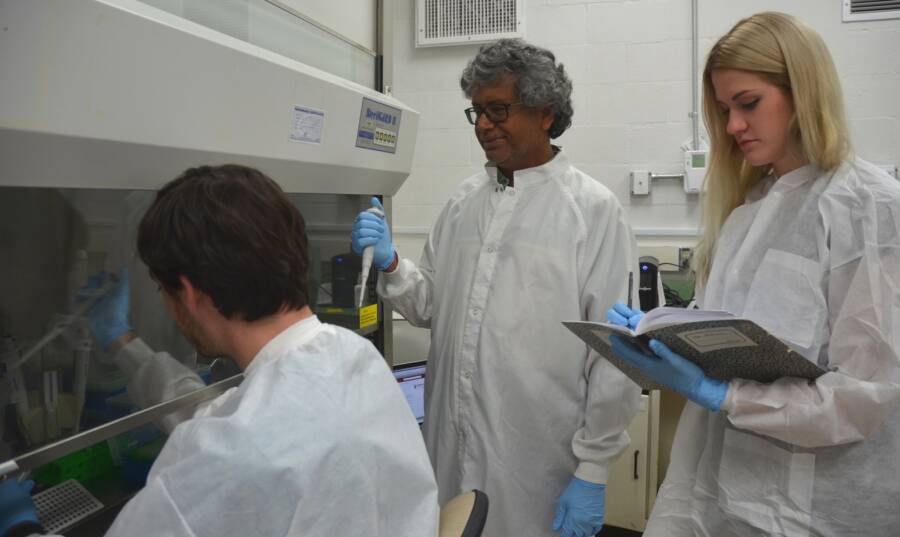Scientists hope to use the fungi's powers to help people who are routinely exposed to radiation like cancer patients and astronauts.

Getty ImagesSince the Chernobyl nuclear explosion in 1986, researchers have found that certain species of fungi are thriving off of the radiation in these now-abandoned areas.
Whether it’s an asteroid or an ice age, planet Earth and its lifeforms always seem to find a way to carry on in the face of destruction and change. For instance, scientists have found fungi that are capable of thriving in the toxic environment of Chernobyl by absorbing and feeding off of the surrounding radiation.
The discovery has led scientists to believe that this extraordinary ability could be harnessed to shield human beings who are routinely exposed to dangerous amounts of radiation like cancer patients, nuclear power plant engineers, and now astronauts in space.
Indeed, according to a recent experiment, researchers believe that these fungi can be used to make shields to protect potential Mars colonizers from cosmic radiation.
The Power Of Black Fungi

Wikimedia CommonsCladosporium sphaerospermum, a self-replicating and self-healing black fungus found in Chernobyl.
The 1986 Chernobyl nuclear disaster remains the worst such incident in recorded history and has killed thousands over the years due to the effects of radiation poisoning. Even decades later, radiation in Chernobyl’s surrounding area lingers, but this hot spot has also become a mecca for a certain type of resilient fungus.
In 2007, scientists discovered several strains of fungi in the Chernobyl nuclear reactor that were actually feeding off of and even growing faster in the presence of gamma radiation. Some records indicate that the fungus was found as early as 1991, just five years after the toxic disaster.
These organisms are known as “black fungi” for their high concentrations of melanin and researchers have identified several strains, including: Cladosporium sphaerospermum, Cryptococcus neoformans, and Wangiella dermatitidis.

IGOR KOSTIN, SYGMA/CORBIS“Liquidators” at the sight of the Chernobyl disaster preparing for cleanup, 1986.
“The fungi collected at the accident site had more melanin than the fungi collected from outside the exclusion zone,” Kasthuri Venkateswaran, a senior researcher at NASA and the lead scientist on the agency’s space fungi project, toldVice.
“This means the fungi have adapted to the radiation activity and as many as twenty percent were found to be radiotrophic—meaning they grew towards the radiation; they loved it.”
Because the fungi contain so much melanin, they are able to feed off of the gamma rays and convert them into chemical energy, kind of like a darker version of photosynthesis. This process is called radiosynthesis.
“The presumption has always been that we don’t know why truffles and other fungi are black,” explained Arturo Casadevall, a microbiologist. “If they have some primitive capacity to harvest sunlight or to harvest some kind of background radiation a lot of them would be using it.”
Harnessing The Fungi’s Defenses Against Radiation

NASA/JPL/CALTECHA strain of black fungi is tested in the lab.
Scientists have since puzzled over how they can best harness the fungi’s defenses in order to protect humans from radiation.
Some applications of this fungus could include: protecting cancer patients undergoing radiation therapy, creating safer environments for those working in nuclear power plants, and potentially helping us to avoid the next nuclear-related catastrophe. Scientists also hope that the fungi could be used to develop a biological source of energy via radiation conversion.
But there are also more far-fetched possibilities. Scientists wonder if the process of radiosynthesis performed by the melanin cells in the fungi could be applied to the melanin in human skin cells, making our skin cells able to turn radiation into “food” too. For now, most experts believe this is a stretch — but they are not ruling this possibility out for other lifeforms.
“The fact that it occurs in fungi raises the possibility that the same may occur in animals and plants,” Casadevall added.

SHONE/GAMMA/Gamma-Rapho via Getty ImagesView of the Chernobyl nuclear power plant after the explosion. April 26, 1986.
Most recently, however, scientists have wondered whether the fungi could help protect astronauts against cosmic radiation during prolonged space travel.
In 2016, SpaceX and NASA sent several strains of black fungi from Chernobyl to the International Space Station (ISS). The shipment also included more than 250 different tests for the space crew to carry out.
The molecular changes that researchers observed in the Chernobyl fungi were brought on by the stress created from exposure to the site’s radiation. Researchers hoped to replicate this reaction in space, where they planned to expose the fungi to the stresses of microgravity and compare them with similar strains of fungi from Earth.
The results of the NASA study could have great benefits for the future of space travel, and possibly even protect astronauts in deep space or potential colonizers on Mars.
A Successful Experiment In Space

NASA/JPL/CALTECHKasthuri Venkateswaran and interns examining radiation-eating fungi.
The fungi’s radiation-blocking powers has become a potential yet unexpected solution to the barriers that we still face in space exploration.
Even though it may look like an empty void, space is actually an extreme and unforgiving environment. Rare experiments to grow plants in space have mostly failed, which is largely why astronauts aboard the International Space Station are forced to sustain themselves on unsatisfying dehydrated substitutes. Scientists hope, however, to find a way to apply the Chernobyl fungus’s ability to radiosynthesize to extraterrestrial plants.
Also, outside of the protective sphere of our Earth’s atmosphere, astronauts are exposed to high levels of cosmic radiation which can lead to sickness and death.
Fortunately, a study published in July 2020 following previous experiments on the black fungi aboard the ISS revealed that the organism could indeed be used as a radiation shield. This could be especially useful for potential future settlers on Mars.

Averesch et alDevelopment of C. sphaerospermum in the International Space Station’s laboratory.
When a small sample of the fungus C. sphaerospermum was sent to the ISS in 2018, researchers found that a minuscule two millimeter-thick sample of it miraculously blocked two percent of the incoming radiation. Not only that, but the fungus was also able to heal and multiply itself. Authors of the study speculated that an eight-inch layer of Chernobyl fungus would likely be enough to shield human settlers on Mars.
“What makes the fungus great is that you only need a few grams to start out, it self-replicates and self-heals, so even if there’s a solar flare that damages the radiation shield significantly, it will be able to grow back in a few days,” said study co-author Nils Averesch of Stanford University.
The findings are certainly promising but more technical studies are needed before we are ready to think about colonizing Mars. There are still unresolved challenges as to how to sustain the fungus in space. For one, the fungi could not be cultivated outdoors on Mars because of the severe cold. There is also the issue of supplying water to grow it.
Meanwhile, these fungi are not the only organisms that have been able to flourish in Chernobyl’s radioactive exclusions zone. Over the years, scientists have found an abundance of wildlife thriving in Chernobyl’s abandoned surroundings. Wildlife has also been spotted at the site of the Fukushima nuclear disaster in Japan.
Although scientists have yet to crack the mystery of the Chernobyl fungus, it’s clear that life keeps finding a way to flourish even in the harshest of environments.
Next, take a look at some haunting photos of Chernobyl today. Then, read about Anatoly Dyatlov, the man behind the Chernobyl disaster.





